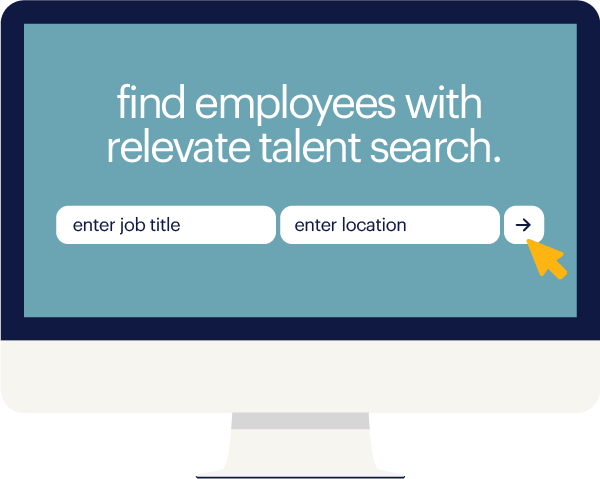The sky's the limit when it comes to growth in tech, but the shortage of talent continues to plague employers.
We examined the latest hiring trends throughout the tech industry, outlined the challenges they pose to you and offered solutions to help you overcome them. Let's get started.
hiring outlook in numbers
Job opportunities for computer and information technology occupations are expected to grow 12 percent by 2028 — that translates to roughly 546,200 new jobs in tech.
According to data obtained from labor-insight provider Burning Glass, demand was high over the past year for:
-
cloud engineers: 31,478 job postings
-
DevOps developers: 312,786 job postings
-
JavaScript developers: 8,100 job postings
-
machine learning engineers: 12,000 job postings
-
.NET developers: 43,157 job postings
-
security analysts: 25,000 job postings
Unfortunately, the shortage of skilled tech talent continues to make filling these and other positions a challenge.
 the tech talent shortage could cause the U.S. to lose out on $162B in revenue a year.
the tech talent shortage could cause the U.S. to lose out on $162B in revenue a year.
There's no question that when it comes to tech, it's a job seekers' market, and a majority of today's tech pros are are enjoying greater career mobility as a result.
-
62% of tech pros who reported looking for a new job said they were doing so to find a higher salary.
-
36% said they anticipated getting a raise over the next year
-
16% were expecting a promotion within the next 12 months
what this means for employers
The tech industry makes up about 10 percent of the national economy, with $1.8 trillion in economic output. Put simply, you'll likely have a need for tech skill sets at some point, but successfully hiring for them may be challenging.
Here's what we recommend you do to stay competitive based on the current hiring trends in the industry.
 trend:
trend:
shortage of tech talent on the market
how this affects you:
can’t get the talent you need
solution:
expand your search criteria
With competition for talent as fierce as it is today, traditional methods of sourcing candidates may no longer be enough. Follow these suggestions to revamp your hiring approach and keep yourself in the running for top tech talent.
engage passive candidates
Fewer job seekers on the market mean fewer incoming applications, so if your job postings aren't getting the traction you'd like, it's time to get proactive and find candidates on your own.
Passive candidates, or candidates who are currently employed and not actively looking for new opportunities, are a largely untapped talent pool, and targeting them will likely come with less competition.
To find and engage passive candidates:
-
Establish a presence at industry gatherings: Identify passive candidates in person at tech meetups, hackathons or conferences.
-
Go online: Look for candidates on group pages, forums and social media accounts.
-
Source within: Ask employees for referrals, or even recruit existing employees themselves. Internal passive candidates can be identified based on current performance and then upskilled to assume new roles.
don't forget the world's largest talent pool: 70% of the global workforce is made up of passive candidates.
put skills before schooling
Slowly but surely, employers are opening up to the idea of loosening restrictions around college-degree requirements to find talent despite the shortage.
Tech roles in particular lend themselves well to this practice, since many of the skills can be acquired through online study and application. At the end of the day, if a candidate has the skills needed for the role (and has submitted a portfolio clearly demonstrating them), disqualifying them for lack of a degree may no longer be a luxury today's employers can afford.
 9/10 employers said they're ready to consider candidates without 4-year college degrees to get around the talent shortage.
9/10 employers said they're ready to consider candidates without 4-year college degrees to get around the talent shortage.
consider agile talent
If full-time tech pros are proving hard to find, expand your search to include agile talent. Agile workers, like freelancers, contractors or contingent talent, can help you address short-term tech needs while you wait for the right hire. This can be particularly advantageous if your company is focused on a single, critical initiative rather than a full end-to-end digital transformation.
 trend:
trend:
tech talent isn't on the job market for long
how this affects you:
reduces the likelihood of landing top candidates
solution:
streamline your hiring process
When tech professionals enter the job market, they're not around for long. In fact, 43 percent of new hires said they got a job offer in less than two weeks.
To succeed within this tight timeline, you need to refine your hiring process so you can act quickly when the right candidates do appear.
what to do:
-
Plan ahead: Work with senior decision-makers to get the scoop on future initiatives so you can anticipate hiring needs. Start cultivating a talent pipeline of prospective candidates much in the same way you sourced for passive candidates.
-
Be smart about searching: When sourcing candidates, target the networks that you think they would frequent. For instance, use social media to find millennials, attend job fairs for Gen Z candidates or start an employee referral program for older job seekers.
-
Leverage HR tech: The hiring process can move much more quickly when you employ tools like A.I. chatbots or virtual assistants to schedule interviews and video-conferencing apps to conduct them. Expedite the early rounds even further by having candidates submit recorded answers to prewritten prompts.
 trend:
trend:
tech pros are commanding higher salaries
how this affects you:
will make finding (and retaining) talent more difficult
solution:
figure out the right pay rate
Remember that stat about tech job seekers? Sixty-two percent are looking for a new gig in order to get a higher salary. And of those who are employed and not actively looking for a job, they're still expecting either a raise or a promotion. So whether you're looking to hire new — or retain existing — talent, you need to keep your pay rates competitive.
61% of employees would be willing to accept a lower salary in exchange for outstanding benefits
what to do:
-
Use an online salary calculator: A digital pay-rate source, like an online salary calculator, is useful since the data will always be up-to-date. Search the jobs you're looking to fill and enter your local market to see what the average salaries are — then surpass them.
-
Bring on the benefits: If you can't match competitors on salary, consider offering outstanding benefits. Sixty-one percent of employees said that they'd be willing to accept a lower salary if a company had a great benefits package.
-
Pile on the perks: Bolster your great benefits package with equally great perks. Early Friday releases, remote work options and online amenities like gyms and dry cleaning were some of the most coveted incentives among employees.
key takeaways
Hundreds of thousands of new jobs are expected to be added throughout the tech industry by 2028, yet the talent shortage continues to prevent employers from enjoying the full benefits of growth. To stay competitive for talent in the current landscape, remember to:
-
Widen your search to account for passive candidates, non-degreed talent and agile workers.
-
Shorten your hiring process with needs forecasting, HR technology and targeted talent sourcing.
-
Keep your pay rates and benefits competitive to attract and retain talent.
These tips are applicable to any position you'd be looking to fill throughout the tech industry, but if you're looking to fine-tune your approach further, consider some additional customizations.
Tailoring your hiring strategy to align with each position you're looking to fill can give you a greater edge in securing the market's most sought-after candidates. To get started, visit our How to Hire page to search for the roles you’re looking to recruit for, and get individualized tips on how to land the perfect candidates.










